Sunset native’s determination to show district past fascinating not boring sparks late-in-life career as San Francisco historian
With the exception of Golden Gate Park, San Francisco’s Sunset District is well off the beaten tourist track. The sprawling neighborhood bordering the south side of Golden Gate Park has its attractions – Ocean Beach, Stern Grove, Depression-era murals – but its foggy weather, wide and sometimes treeless streets, and row upon row of lookalike, single-family homes, and boxy fourplexes hardly make it a travel destination.

But Lorri Ungaretti knew of its many pleasures, both simple and sophisticated. She turned a native daughter’s curiosity about her childhood neighborhood into a late-in-life career as a chronicler of the district and its history. “People thought the Sunset was so boring, that it didn’t have any history,” said Ungaretti, now 70. “I proved them wrong.”
When she could find no books on the history of the Sunset, Her mother, Dorothy Bryant, a playwright and novelist, told her she should create one. So, at 51, she embarked on a career as a local historian and writer. “I loved spending so much time finding out about it and putting together pieces of the puzzle,” she said.
Over the years she’s supported herself as a substitute teacher, a writer of marketing materials for two law schools, and an editor of supplemental materials for teachers. She also wrote a monthly column informing teachers about affordable classroom aids. She’s a member of the San Francisco Historical Society and managing editor of its journal, “The Argonaut.” And, for the past 15 years, she has been giving historical presentations to various city organizations, and on Zoom for groups around the country.
But her main claim to local fame is the five history books she has written, including two on the Sunset District: “San Francisco’s Sunset District” (2003) and “Stories in the Sand: San Francisco’s Sunset District, 1847-1964 (2012),” which she purposely ended in the year of Proposition 14. It was “mostly so that I could include the Rumford Fair Housing Act (1963) and the 1964 State Proposition 14,” she said. The latter legislation, overturned two years later, allowed California residents to refuse to rent or sell residential property to anyone. “I was only 12 years old, but I knew that Proposition 14 was evil,” she said.
In 2014, she focused on the whole of the city’s west side in “Legendary Locals of San Francisco’s Richmond, Sunset, and Golden Gate Park.”
Playing in the streets
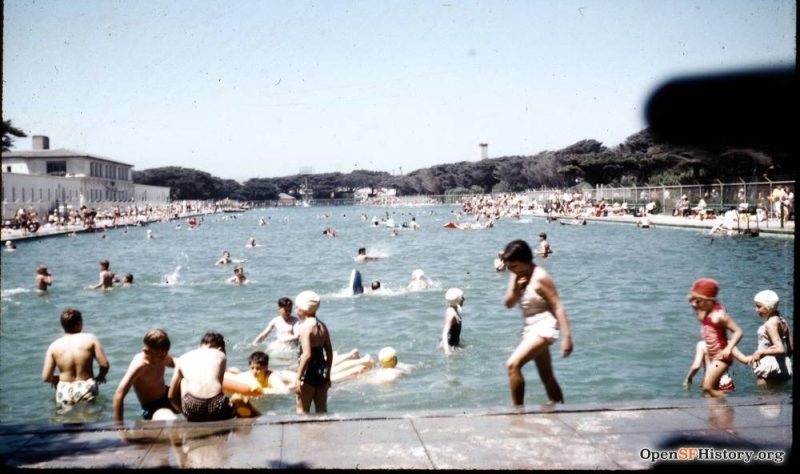
In the Sunset of Ungaretti’s youth, children played in the streets. There weren’t stop signs at every street corner, but drivers weren’t so aggressive. Residents didn’t park on the street; they kept their cars in their garages.
The beach was nearly 30 blocks away, and her parents worried about the undertow, so she didn’t play there. But there the Fleishhacker saltwater swimming pool. And the Playland amusement park. “We went there, but only when our mother drove us,” she said, because it was also far from home. “We spent most of our time at the Funhouse. I don’t remember the admission fee, maybe 25 cents?”
Her mother never worried about their safety, she added.
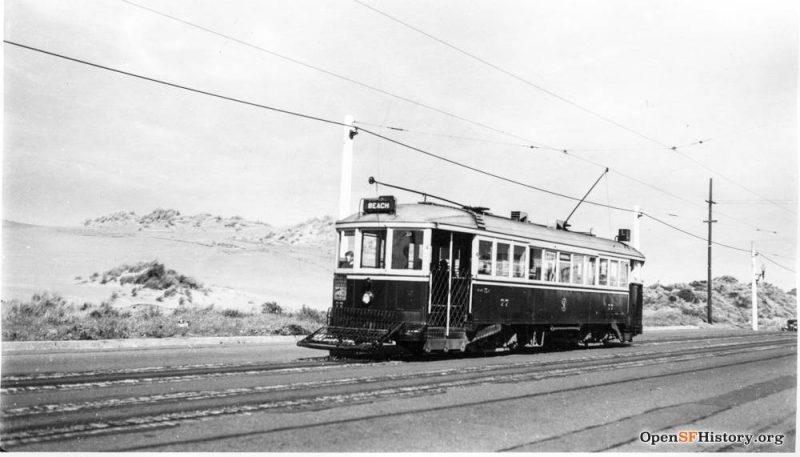
More often, she and her friends took city transportation to the zoo – the L Taraval streetcar; Golden Gate Park attractions – the 28 19th Avenue bus. “We often went to the De Young Museum, the aquarium, the original Academy of Sciences, and the Japanese Tea Garden. All free,” she said, except 26 cents for tea and cookies at the garden.
The Gold Mirror, a family-owned Italian restaurant at 18th and Taraval, was a favorite. “It’s still there, but the sign says it opened in the 1960s. It first opened in 1953, and we went several times in the late 1950s.”

In 2001, she became a San Francisco City Guide, taking people around the Inner Sunset. “I love sharing the history of a neighborhood, especially when I know an amazing story that helped make the neighborhood what it is.” People especially liked the old photos, like a house surrounded by sand, she would show them.
Although the pandemic has temporarily paused her work as a guide, Ungaretti continues to write and unearth facts about the west side of San Francisco. Her other books explore the Richmond District, which mirrors the Sunset on Golden Gate Park’s north side, and legendary locals.
City delights

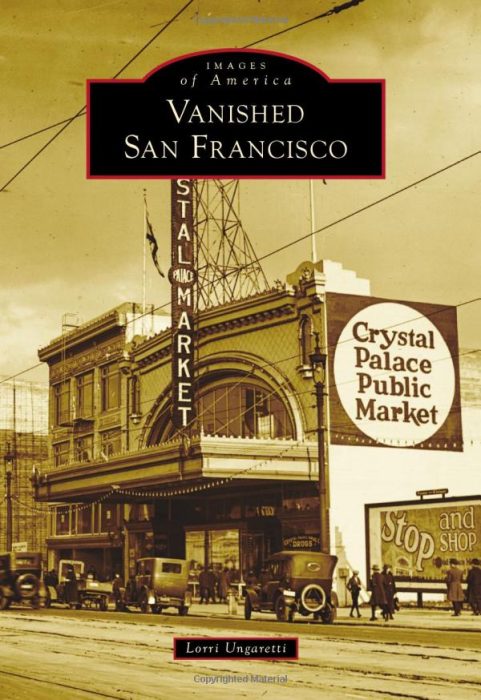
her historical explorations eventually broadened to the rest of San Francisco. She published a history of the Richmond District in 2005, and this year, “Vanished San Francisco” which chronicles the city’s many physical changes over the years. Her video presentation for the historical society recalls the massive Crystal Palace Market, a 70,000-square-foot emporium of food stuffs, butchers, and services such as a hat blocker and a hair salon. Open from 1922 to 1959, “People came from all over the city to shop there,” she said.
As Ungaretti grew older, she didn’t just hang out in the Sunset District. In high school, she and a friend visited Ghirardelli Square and the Cannery. Their favorite stop was the Portofino Cafe on Ghiradelli’s second floor.
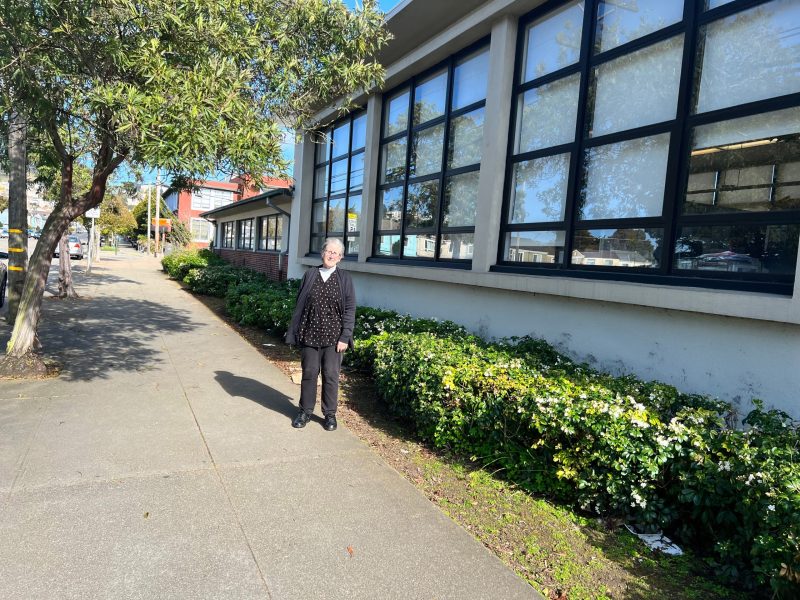
“We ordered inside and then went out to the tables to watch the bay. Espresso drinks were rare then, and that’s where we discovered them,” she said. It’s been closed for probably 50 years, and no cafe ever reopened on the spot, she added. “Too bad. It was a great place, with outside heaters to keep us warm.”
Sometimes they went to the Ghirardelli Chocolate Manufactory, where you could get sundaes. But ice cream could also be had in the Sunset, at a popular parlor called Wally’s at the corner of 24th and Taraval. It’s been gone for about 50 years, Ungaretti said, “but you can ask any Parkside adult, and he or she will probably remember Wally’s. We got ice cream, but I remember the frozen bananas best.”
The Sunset District comprises a bevy of sub-neighborhoods, all having their own history and attractions. The Parkside, for example, is named for the Parkside Realty Company, which developed land from 1905 through the 1920s as the new streetcar lines and the automobile made the area more accessible.

Now San Francisco’s largest neighborhood, the Sunset encompasses 5.7 square miles. In the city’s early days, it was deemed uninhabitable – its underpinning of sand dunes, builders thought, made construction too difficult.
Developing the dunes
It was only after the 1906 earthquake and fire, which leveled most of the city, that developers looked to the Sunset to figure out how to build houses there, Ungaretti said.
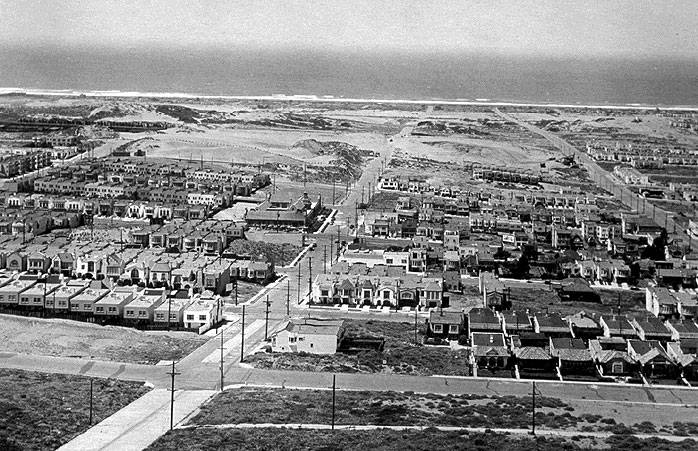
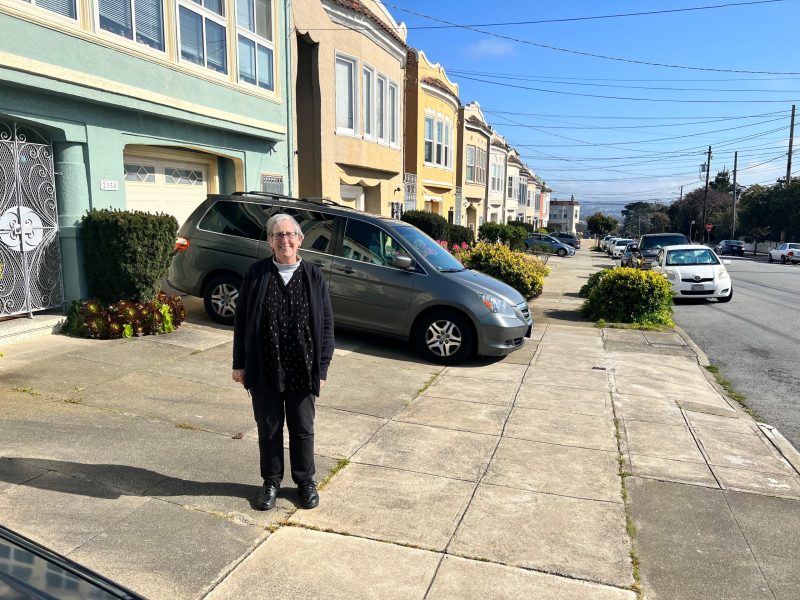
One of the developers who brought affordable housing to the neighborhood was Henry Doelger. By 1934, when he was 38, he was completing two houses a day. Selling for $5,560, the homes were made for working-class families that previously couldn’t afford one. “A nice thing about Doelger, and other Sunset builders,” Ungaretti said, “was that they built homes in the neighborhood for them and their families.”
As she walks around the Sunset, she likes to point out little-known landmarks. The front façade of St. Anne’s Church, on Judah Street near 14th Avenue, is adorned by a frieze created by Sister Justina Niemierski, a trained artist. The building on Hugo Street where Doelger lived is still standing but was damaged by a fire.
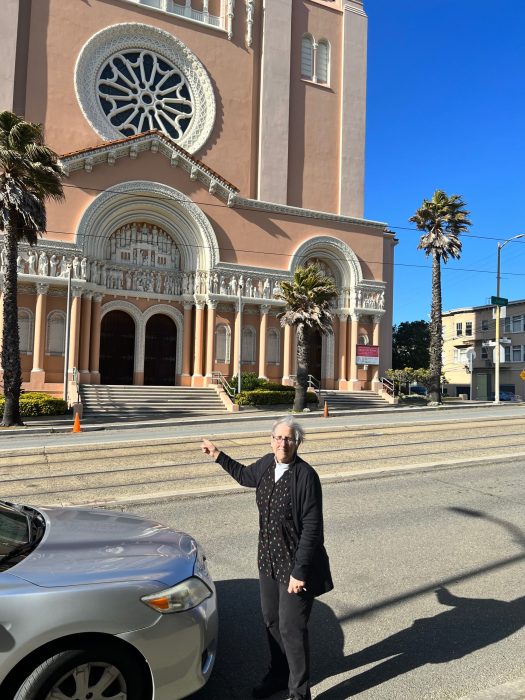
Writing came easily to Ungaretti, so she decided to major in English. She earned a bachelor’s degree from San Francisco State College (now university) along with an elementary school teaching credential. Later, she earned a Master of Science in Business Administration.
Her plan to become a teacher when she graduated in 1976 was stymied by Reagan-era budget cutting and population shifts. “Teachers were getting laid off left and right, and if anyone was hired, it was one of those,” she said. “I really wanted to stay in education.”
She finally found her niche with small, independent educational publishers. Those companies produced supplemental and alternative teaching materials for teachers. She worked for a few in the Bay Area, and one in Pennsylvania.
When large textbook companies started buying up these smaller publishing companies, Ungaretti returned to San Francisco and started work at Golden Gate University’s School of Law. She helped produce marketing materials, catalogs, and its alumni magazine. She ended her career working at Hastings College of the Law (now University of California College of the Law, San Francisco.)
History as comfort
It was on a City Guide walking tour she realized that as a native, she knew more than most about San Francisco. So she joined the group and started doing tours of the Inner Sunset. She soon created several more tours, including the Parkside and Stern Grove. “I love sharing the history of a neighborhood, especially when I know an amazing story that helped make the neighborhood what it is,” she said.
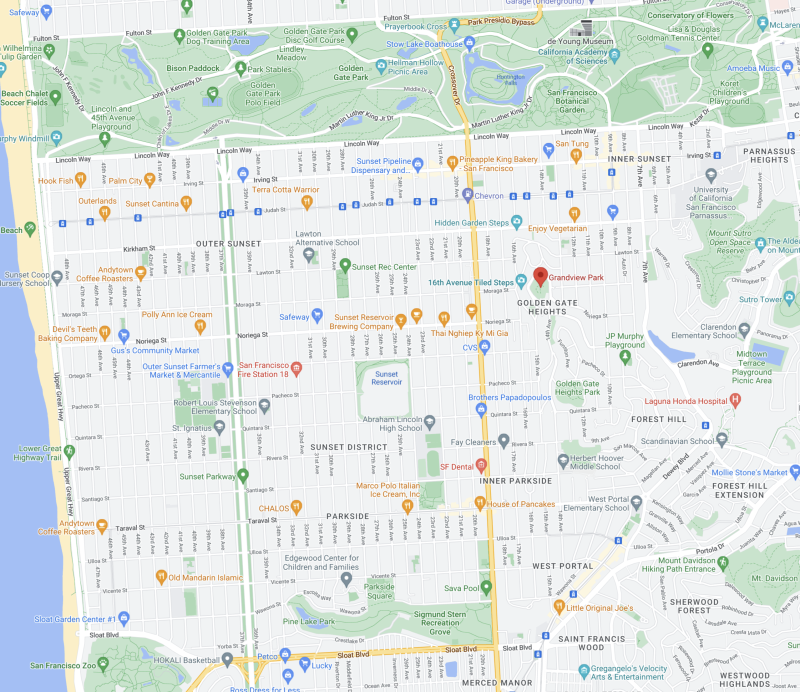
She had to be fully ready for her presentations whether the tours attracted two people or 30. Working with City Guides and the San Francisco Historical Society not only supported her love of history but provided her a family of sorts.
“My dad died in 2010, and so when my mother and stepmother passed away within 11 days of each other in 2017, I felt very much alone,” said Ungaretti, who never married or had children and now lives on Nob Hill.
“Doing research, writing and publishing six books on San Francisco, being known throughout the community in different historical groups, giving presentations in schools and in other places has definitely changed my life for the better,” she said.






jim clifford
Great read. I grew up near the zoo in the 1950s when the Sunset was still a collection of sand dunes. Was in St. Gabriel's first graduating class in 1952. This story fired up a lot of warm and fuzzy memories. Even sounds came back: the fog horns, the lions roaring in the zoo, the pounding of the Pacific surf and the L Taraval making its screeching turn at the end of the line. What a lullaby.